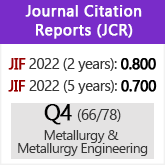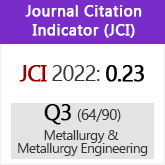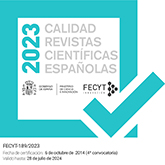The removal of toxic metals from liquid effluents by ion exchange resins. Part I: Chromium(VI)/Sulphate/Dowex 1x8
DOI:
https://doi.org/10.3989/revmetalm.2002.v38.i4.412Keywords:
Liquid effluents, Removal, Chromium(VI), Sulphate, Dowex 1x8Abstract
The removal of chromium (VI) from sulphuric acid solutions using the Dowex 1x8 resin has been investigated. The influence of several variables such as the stirring speed, temperature, the sulphuric acid and metal concentrations in the aqueous phase and the variation of the amount of resin added has been studied. Various aqueous solutions were used for the elution of the metal. Although concentrated nitric acid elutes chromium, this can be best accomplished using hydrazine sulphate solutions which at the same time reduce the toxic Cr (VI) to the less toxic trivalent chromium state. Results obtained from batch experiments were applied to a continuous system using vertical columns. Moreover, an analytical application of the system in the determination of Cr (VI) presents in the leachate of an EAF dust was investigated by transfering the methodology to an on-line flow injection system.
Downloads
Download data is not yet available.
Downloads
Published
2002-08-30
How to Cite
Alguacil, F. J., Coedo, A. G., Dorado, T., & Padilla, I. (2002). The removal of toxic metals from liquid effluents by ion exchange resins. Part I: Chromium(VI)/Sulphate/Dowex 1x8. Revista De Metalurgia, 38(4), 306–311. https://doi.org/10.3989/revmetalm.2002.v38.i4.412
Issue
Section
Articles
License
Copyright (c) 2002 Consejo Superior de Investigaciones Científicas (CSIC)

This work is licensed under a Creative Commons Attribution 4.0 International License.
© CSIC. Manuscripts published in both the printed and online versions of this Journal are the property of Consejo Superior de Investigaciones Científicas, and quoting this source is a requirement for any partial or full reproduction.All contents of this electronic edition, except where otherwise noted, are distributed under a “Creative Commons Attribution 4.0 International” (CC BY 4.0) License. You may read here the basic information and the legal text of the license. The indication of the CC BY 4.0 License must be expressly stated in this way when necessary.
Self-archiving in repositories, personal webpages or similar, of any version other than the published by the Editor, is not allowed.

















